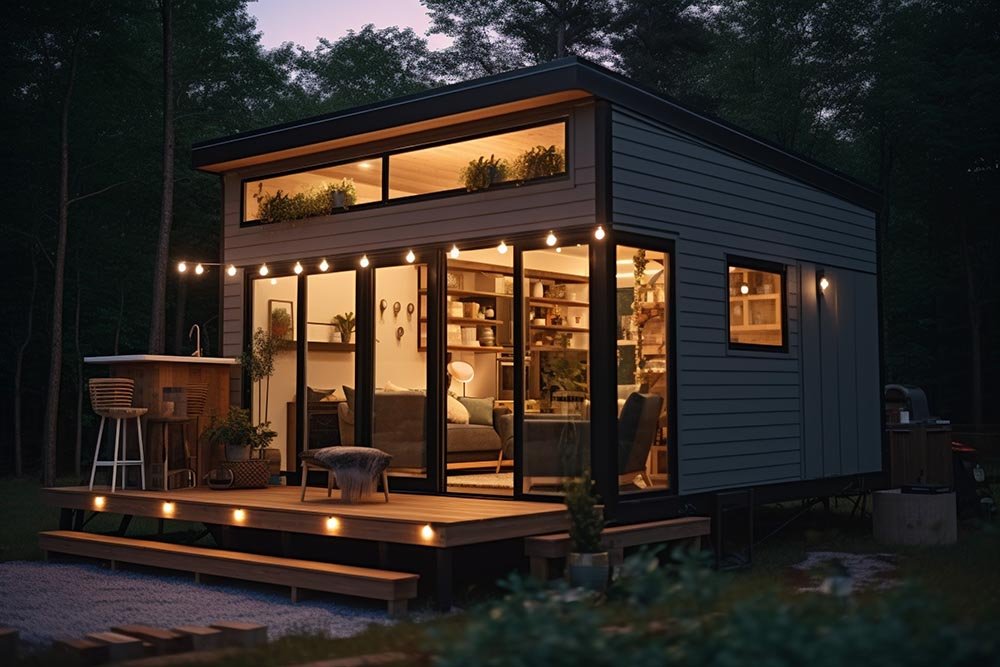Designing a house without considering its location can be a huge mistake. Location can greatly influence property values. Homes near hospitals, malls, train stations, and good schools are worth more. Residential properties in safe neighborhoods can command higher prices because they offer convenience and a better quality of life.
Location is crucial in home design, significantly impacting quality and functionality. Let’s explore why location matters in home design.
Table of Contents
Topography
Distinct characteristics, such as topography, vegetation, and views, provide opportunities and constraints that can shape the design. Natural landscapes serve as opportunities for seamless integration with the environment.
For example, a sloping site can inspire a multi-level structure that integrates with the natural contours. You can highlight interesting spatial arrangements to increase visual appeal. Building on a sloping site may require engineering expertise. However, you can check the advantages by consulting an experienced architect regarding structural stability and proper site preparation.
Extensive outdoor living spaces in a home near a scenic view can maximize the connection to the outdoors. Architects like Decus collaborate with nature to create homes that harmonize with their surroundings. It can showcase nature’s beauty while providing functional and comfortable living spaces.
Imagine a house nestled in a lush forest where you can embrace the beauty of nature. The home can feature large windows that offer stunning views of trees, sunlight, and wildlife. Open floor plans and expansive decks integrate living spaces into the natural environment. Homeowners can watch the seasons change and listen to the sounds of nature.
Meanwhile, designing homes in coastal areas requires considering saltwater exposure, high winds, and flooding. Homebuilders can use materials and construction techniques resistant to corrosion. They can also incorporate elevated foundations and hurricane-resistant features. These homes blend functionality and aesthetics while ensuring safety and longevity.
Architects work with natural landscapes to create homes that inspire and embrace nature. By integrating natural surroundings into the design, they can build homes that withstand elements and nurture a connection to the environment.

Climate And Weather
Designing a home based on the climate is crucial for creating comfortable, energy-efficient living spaces. Factors like temperature, humidity, and wind patterns influence home design choices.
Architects can customize their designs by understanding the weather patterns of the area. They can integrate methods that can improve energy efficiency and increase comfort. In addition, they can establish a cohesive connection between the residence and its surroundings.
Homes in places with extreme weather need to be well insulated. It keeps heat from moving through the walls, roof, and windows by acting as a thermal barrier. Using high-quality insulating materials can help homeowners in many ways. Architects can build a home that consumes less energy, maintains a stable temperature, and requires less heating and cooling.
The property’s location can help maximize natural light and minimize heat gain or loss. Homebuilders can harness daylight by positioning windows strategically, allowing sunlight to penetrate the interior spaces. They can also incorporate shading devices such as overhangs, awnings, or blinds to reduce intense heat, minimizing air conditioning usage.
Meanwhile, maintaining good indoor air quality and thermal comfort requires effective ventilation systems. Architects consider prevailing wind patterns when designing openings such as windows, vents, and skylights to allow for natural ventilation.
As you tailor your clothing to suit the weather, homes should adapt to their unique climate, ensuring a comfortable and sustainable living space.
Sustainability And Environmental Impact
Architects can design homes with the least environmental impact by considering the location. They can use passive design principles to maximize natural light and airflow. They may even recommend installing renewable energy systems like solar panels and using environmentally friendly materials.
Sustainable design practices can render a residence less detrimental to the environment. It also enhances energy efficiency, resulting in long-term cost savings for homeowners. Furthermore, it enhances indoor air quality, promotes healthier living conditions, and benefits homeowners and the planet.
Community And Lifestyle
Each region’s distinct community and lifestyle factors can influence home design. Architects can customize the design to reflect local culture, architectural traditions, and unique surroundings. This way, the house blends in with the surrounding community and gives its residents a sense of belonging.
For instance, the design for urban areas may focus on optimizing space utilization and accommodating compact living. On the other hand, larger lots and outdoor amenities may be prevalent in suburban or rural settings.
Conclusion
A home’s location is crucial for creating a well-designed, sustainable, and harmonious living environment. It allows architects to respond to climate, site conditions, and natural surroundings. Hence, they can design homes that are comfortable, efficient, and suited to the unique needs and desires of the homeowners.
By integrating the location into the design process, architects can create homes that genuinely connect with the environment and provide an enhanced living experience.










